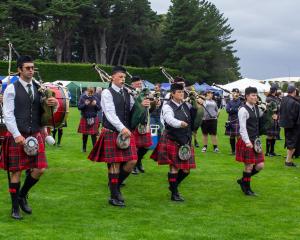
Peake’s Kitchen and Papatowai Country Store owners Nicole and Tom Peake were strolling on Papatowai Beach on Tuesday when they discovered a magenta-coloured crayfish tail shell.
The couple, who often share treasures from their beachcombing experiences on their businesses’ Facebook page "Peake’s Kitchen", were "particularly delighted" by the discovery.
They described the shell as one of their "most unique finds yet".
"From transparent miniature lobsters, baby octopus and giant jellyfish to circular saw shells and of course beautiful paua shells of all sizes ... we find a lot, but this is the first time we have ever seen a crayfish shell of such a vibrant bright purple colour.
"We see a lot of crayfish shells on these shores, but this one truly stands out and caught our eye immediately.
"The mysterious tail shell has stirred a buzz online among our followers.
Suggestions had ranged from it being part of their molting process to whimsical theories about it being a mermaid’s tail.
"Some speculate it might be related to exotic species like the Caribbean spiny lobster or Australian crayfish."
The University of Otago marine biology department was contacted in regards to the crayfish, but could not provide an answer in time.
The Victorian Fisheries Authority stated online "it turns out it is diet".
"A typical southern rock lobster’s diet usually consists of mussels, abalone, crabs, sea urchins, starfish and algae.
"However, it’s the algae that directly affects their colour.
"Rock lobsters’ favourite algae contain fat-soluble pigments known as ‘carotenoids’.
"These are commonly found in yellow, orange and red vegetables, e.g. carrots, capsicums.

"Those that can’t access it don’t produce red or orange pigment, making them purple or, if carotenoid levels are really low, a bright magenta colour.
"That’s why tank-reared rock lobsters that are not fed algae tend to be bright magenta, too."
Mrs Peake said the discovery of the shell was a reminder for people to explore the world.
"For local nature enthusiasts of the Catlins, this discovery is a reminder of the natural wonders that can be found in their own backyard.
"Families are finding new excitement in their beach outings, hoping to catch a glimpse of similar rare finds."
Their discovery not only highlighted the mystery of Papatowai’s coastline but also brings a sense of community as people share in the wonder of this rare find.
Whether a mermaid’s tail or a peculiar crustacean artefact, the rare purple crayfish tail continues to captivate the imagination of Papatowai.
Do you know any more about this? Contact info@cluthaleader.co.nz with your theories.












